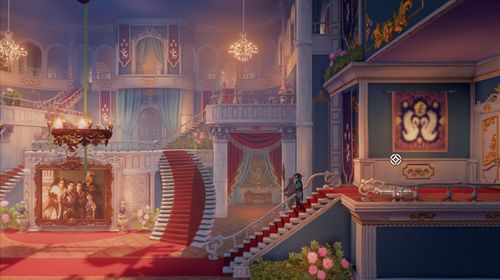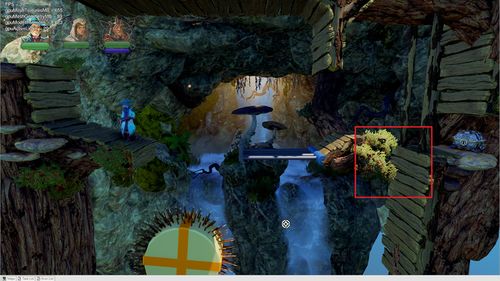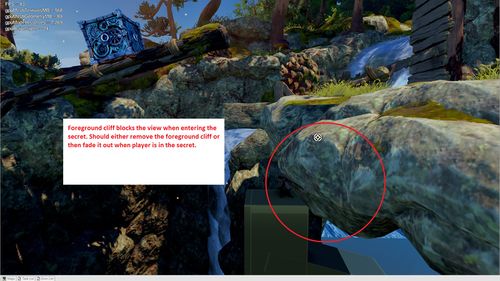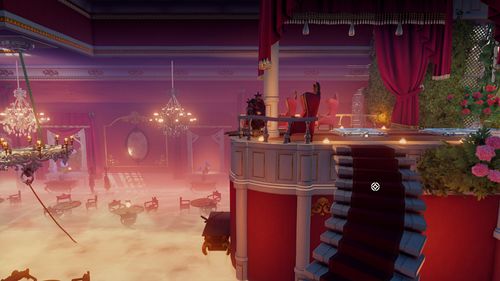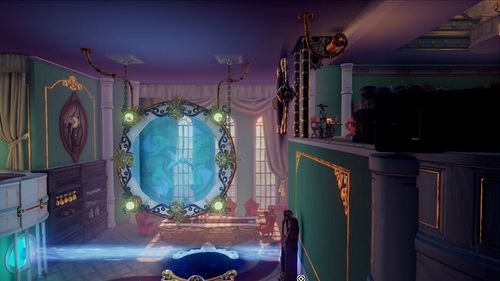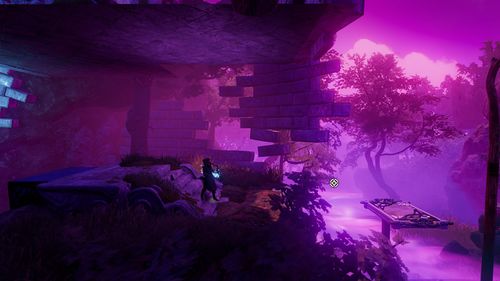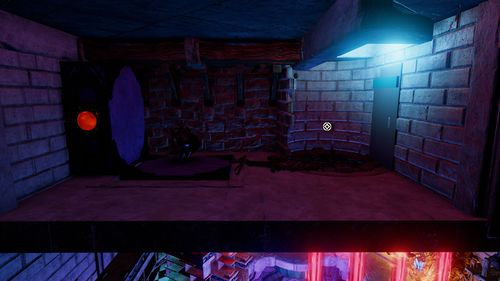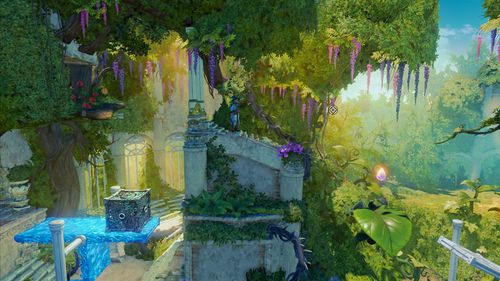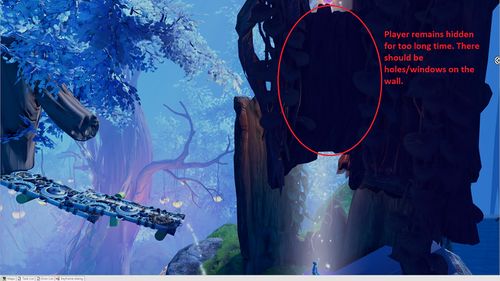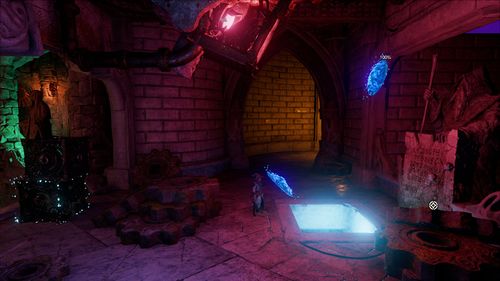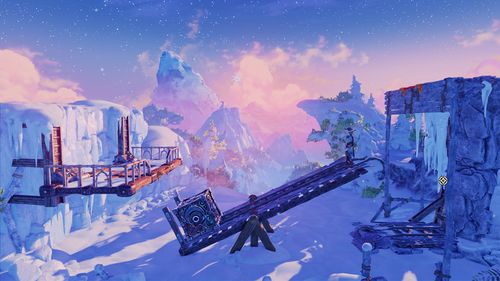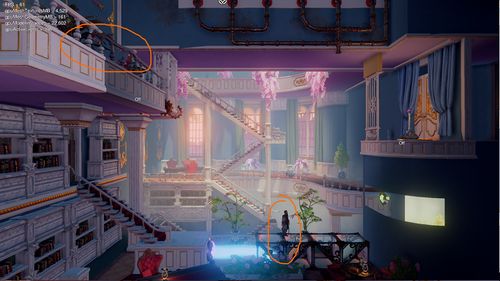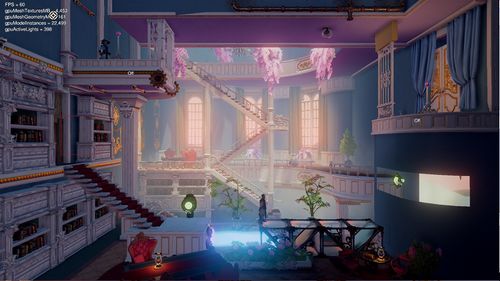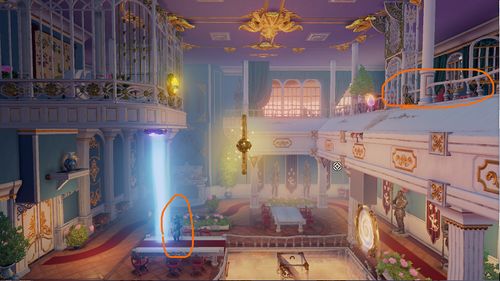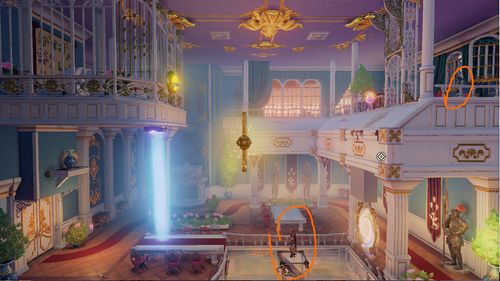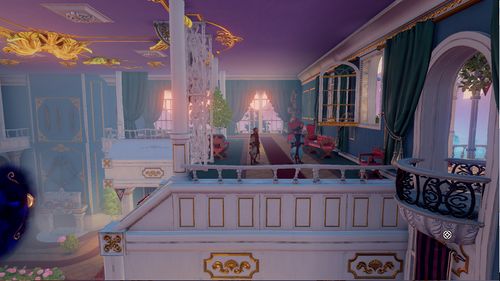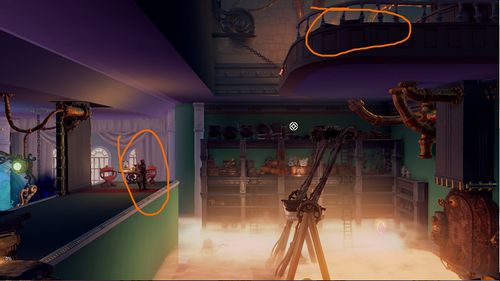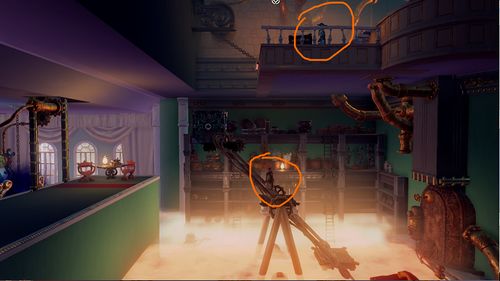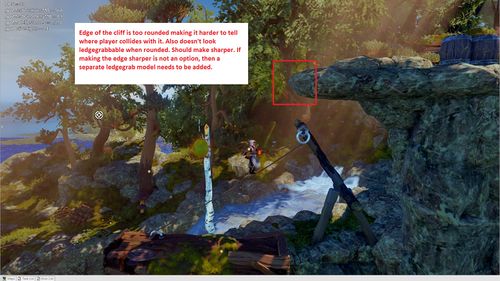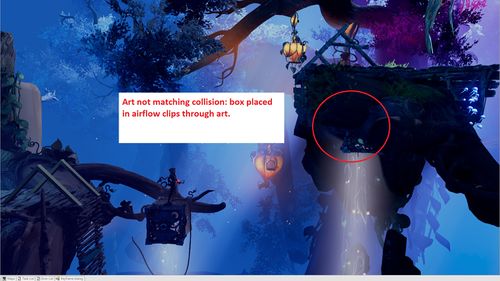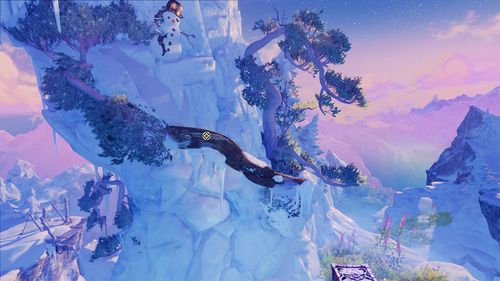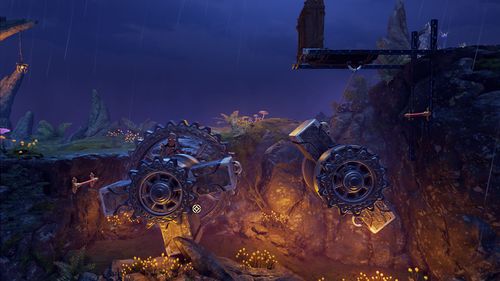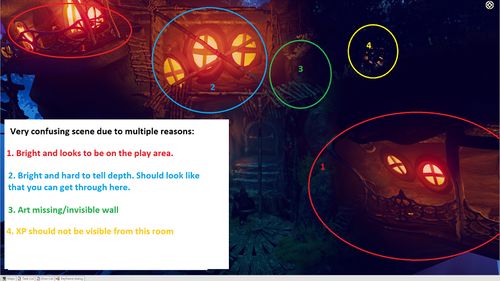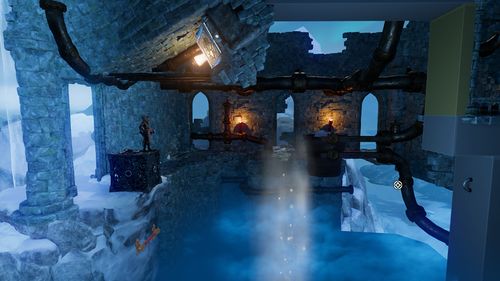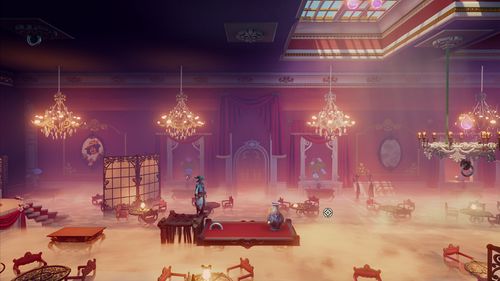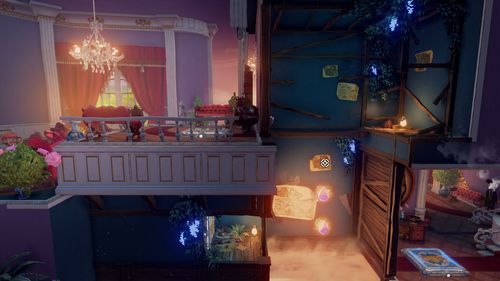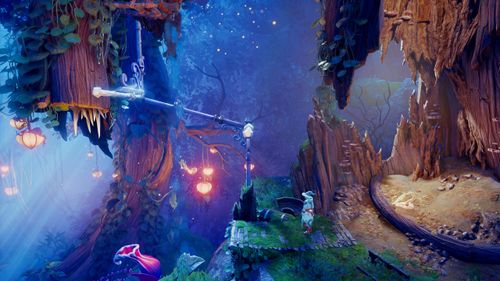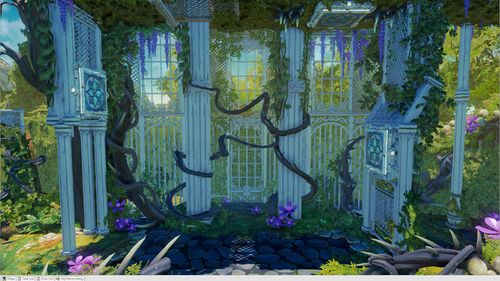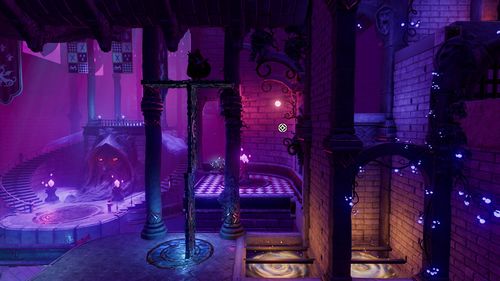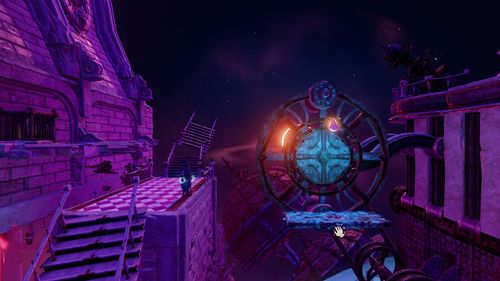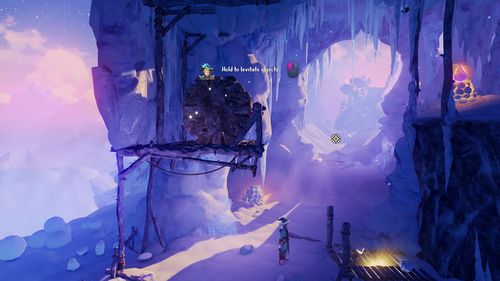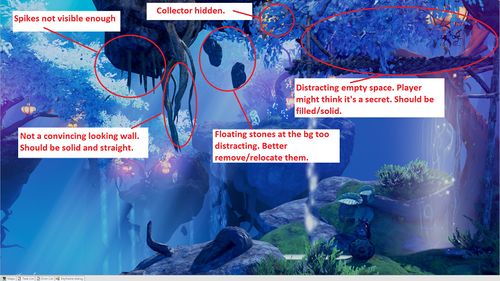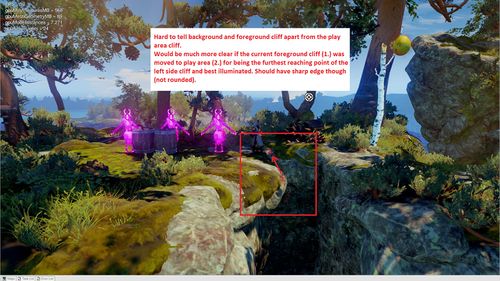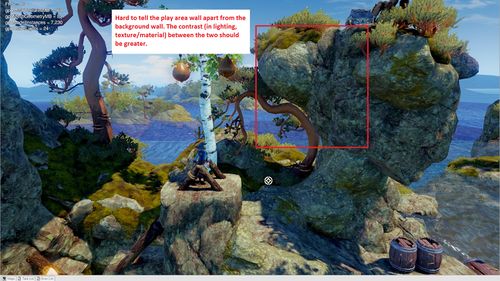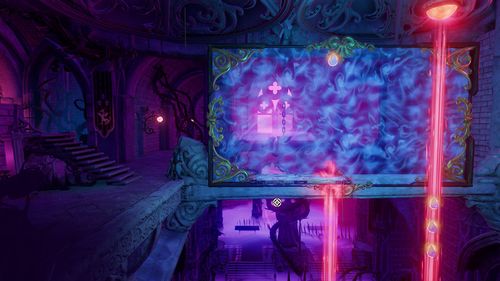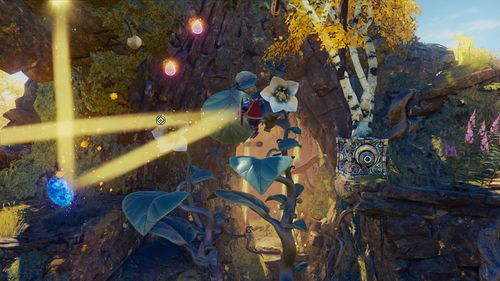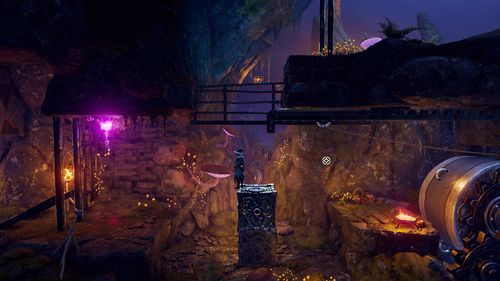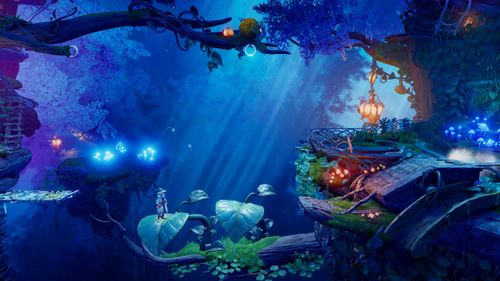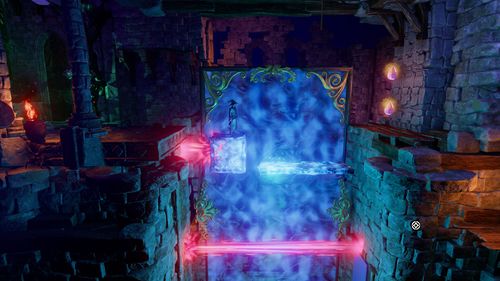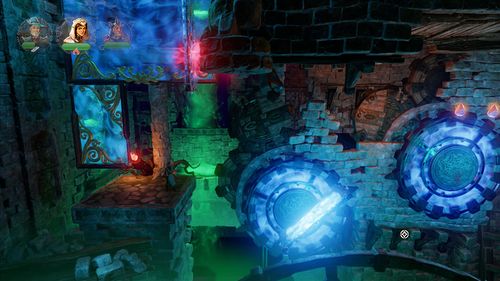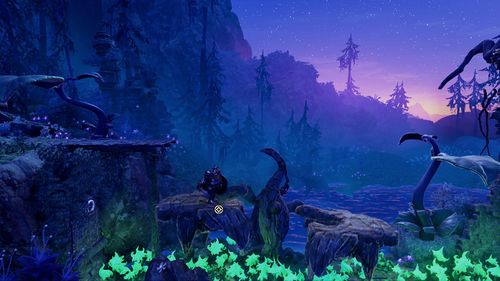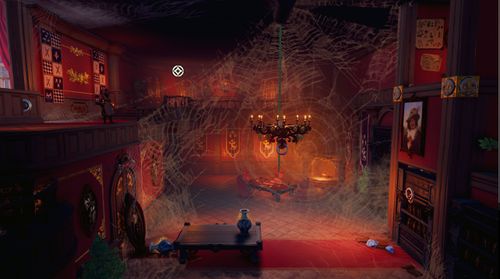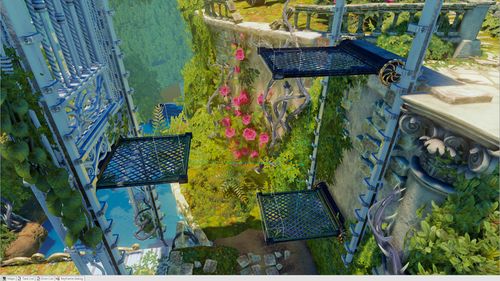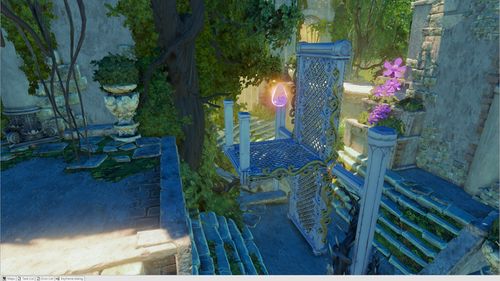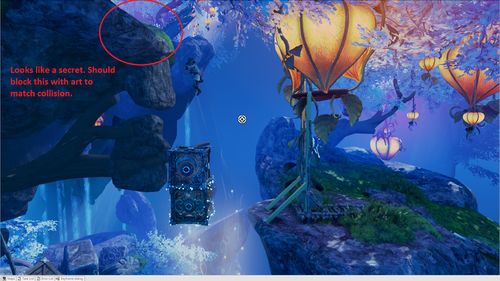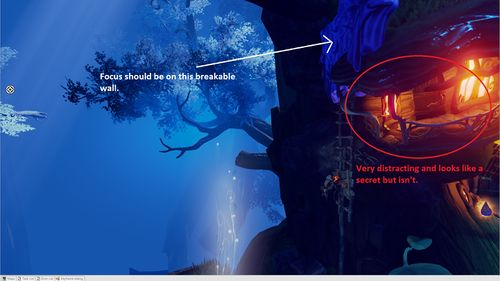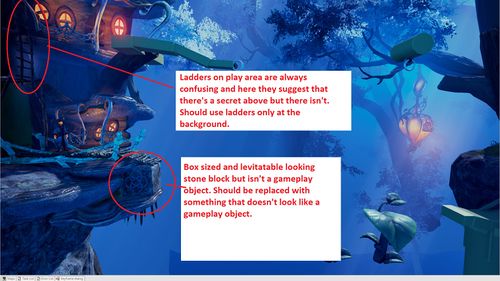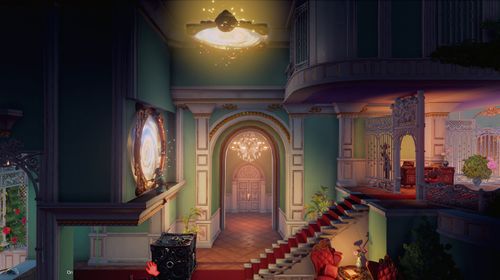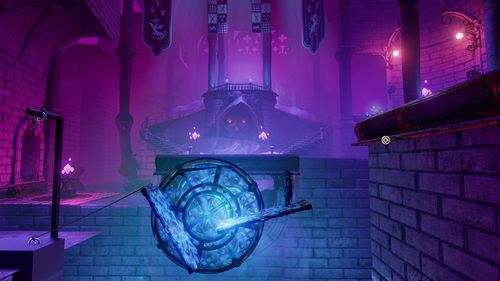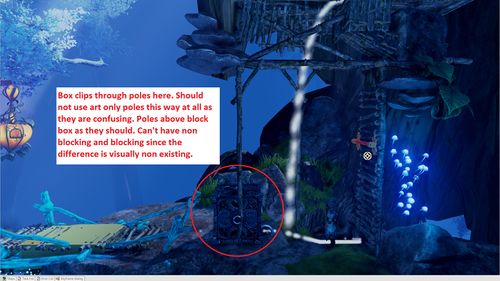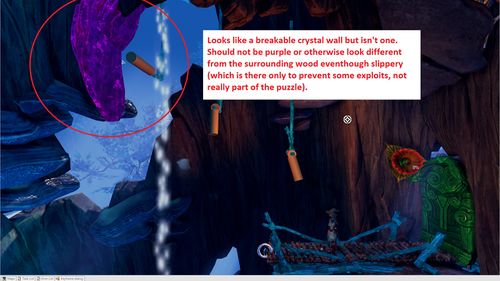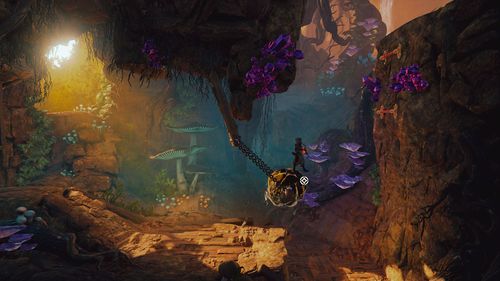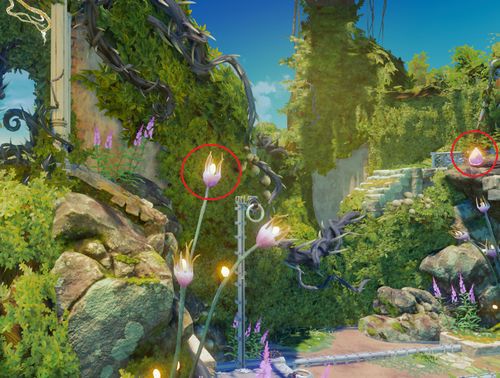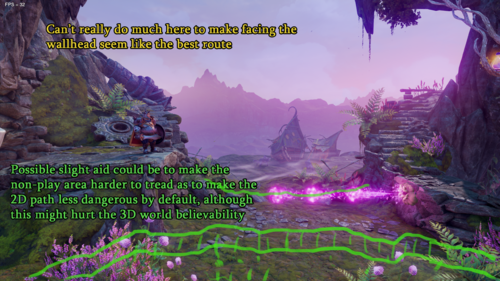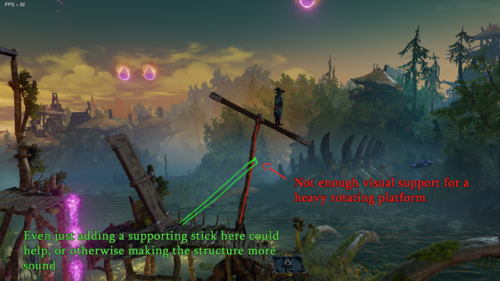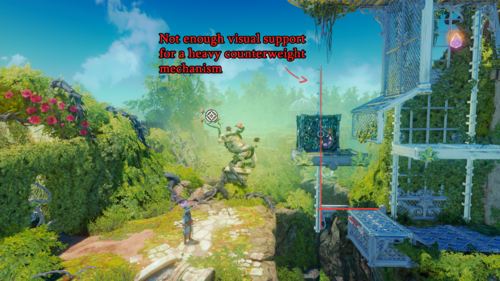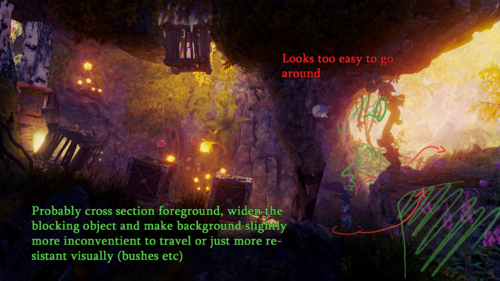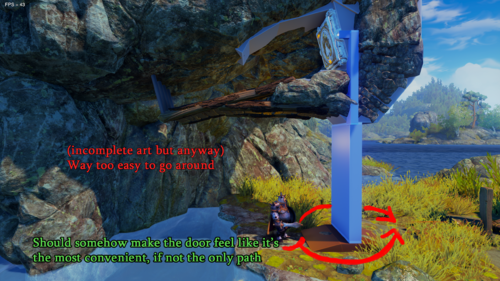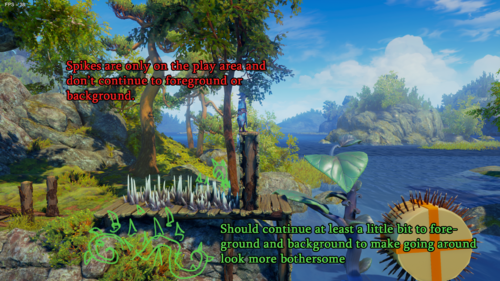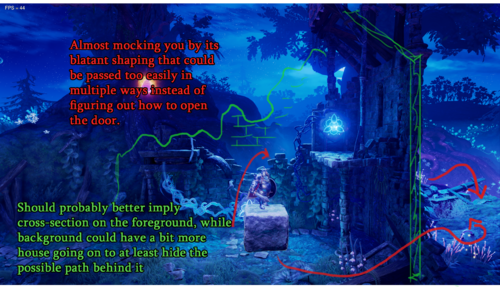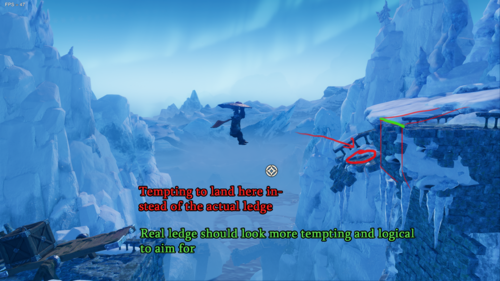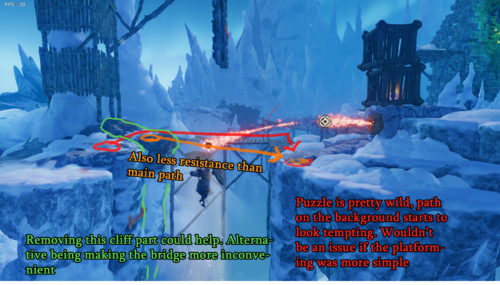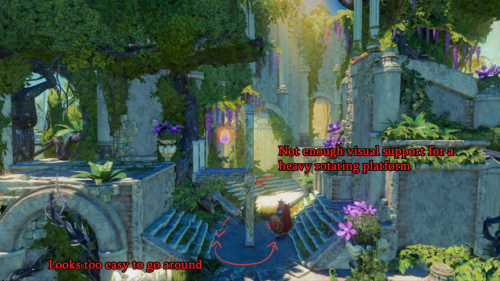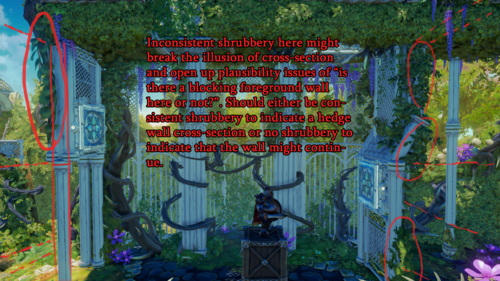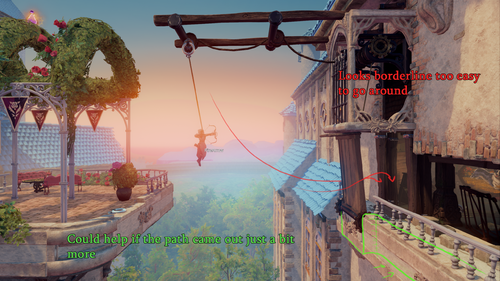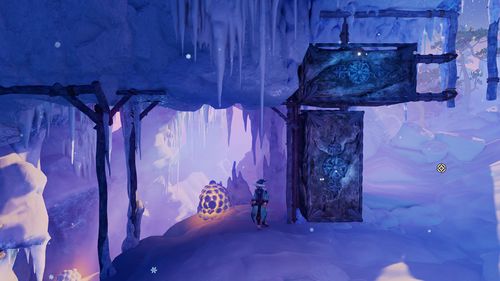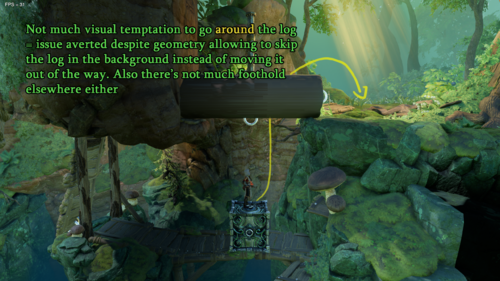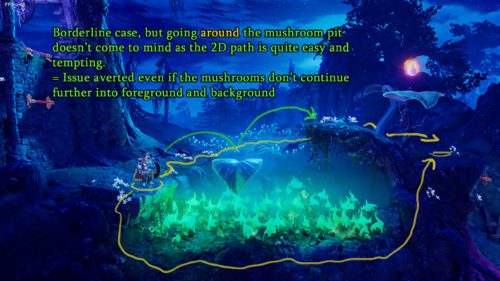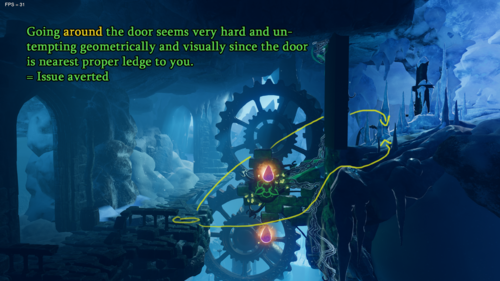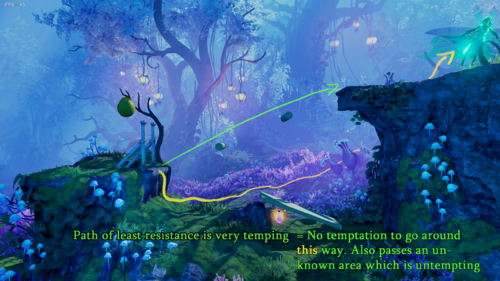Level Art: Level Art Related Gameplay Issues
Contents
Level Art Should Support Gameplay
- The purpose of the Level Art is to make the game beautiful - and also support the gameplay.
- This section of the Wiki contains general guidelines on how to avoid creating misleading level art causing gameplay issues.
- In the examples below, the level art obfuscates and misguides the player in both obvious and more subtle ways.
- The examples below are for educational purposes only - some of the cases are fictional and constructed to showcase level art issues. Some are from the early stages of development and do not represent the finalized product.
- Level artists should frequently play the level or scene they are working on. That helps to spot any gameplay issues the level art may cause. It's impossible to notice some errors while using the free Editor view only - that's not what the players see - so it's essential to play the game.
Art Hides Something Important
- Don't place the foreground art carelessly so that it covers something important, like puzzle elements or a ledge requiring the player to see exactly where the character is.
- The Player character should always be visible, so be mindful of your foreground art. For example, the camera should be adjusted so that the doorways in the gameplay area never hide the player character completely.
- Sometimes level art is intentionally used to hide gameplay elements, like XP and secret areas. On the other hand, if an item is essential for the player's progression, it should always be fully visible and in plain sight.
- The composition of the scene should emphasize important gameplay elements. Draw the player's eye towards things relevant to the gameplay.
Art Hides Something Important in Multiplayer
- Because the camera angles are often wider in multiplayer modes, you should be extra careful when placing the foreground elements.
- Typically, all players should always be in the same view.
- Vertical scenes are the most challenging to implement: When one player climbs up on a platform, they should be as visible as another player at the very bottom of the scene.
Fading Environment Objects in Trine
- The environment objects should be faded only when they're used as secrets.
- If something is faded out upon entering an area, it should be faded back in when the secret area is left.
- The fading effect should not be used, for example, to a wall facing the camera during a standard progression route.
- As the video shows, exceptions can be made, but only after setting up the cameras so that the character can't remain standing in the doorway.
- The situation depicted in the video showcases how the cameras and level art work together to create the desired effect. The camera doesn't go through the wall, but the level artist can plant a window on the camera's path. The player should feel safe when jumping to the unknown, so you might want to include another door or a window in the scene's foreground to show that the path continues to the other side.
- Enable UseNoisedVisibility on modelcomponent of the object being faded to make the fading effect smooth and avoid flickering like shown on the video.
Collision Mismatches
- The level art should always match collisions as closely as possible.
- If the collision is smaller than the art asset, the characters or levitated objects will clip through the art when interacting with the collision point.
- If the collision is bigger than the art asset, the characters or levitated objects will float in the air when interacting with the collision point.
- If the collision in a particular area is intended to be sharp, try to avoid round and edged art.
- Pay particularly close attention to the edges that are ledge-grabbable.
Distracting Level Art
- When a game combines a 2D gameplay with a 3D environment, it can be hard to differentiate the background items from the gameplay area. If the player doesn't have a clear understanding of the gameplay area, they get easily frustrated.
- At all times, the player should be able to differentiate the gameplay area from background and foreground areas.
- If the critical gameplay elements are lost amidst the background art, it'll disturb the smooth flow of the playing experience.
- The level geometry should be free from any confusing elements and easy enough to grasp with a single glance.
- Tip: Try to distance yourself from your work by shrinking the level to a very small size (you can use screenshots, for example) or take a step back and squint your eyes. If you can't instantly recognize the general shape of the level, there's probably something wrong with the visuals.
- You can learn more about fixing and (preferably) avoiding gameplay-related level art issues by studying the importance of values and contrast
Gameplay Route Issues
- If the player's intended progress route isn't clear enough, it's good to check the level art of the area.
- Level art may mislead the player into thinking that a route is safe, dangerous or somehow blocked when it actually isn't.
- The player should always know where to go and what's happening. To achieve that, the main path should always be obvious and easy to follow.
- If more than visual fixes are needed to highlight the main route, talk with the designer responsible for the level.
- Avoid planting hidden or obstructed entrances along the main path. The entries to hidden or secret areas should always be visually less tempting than the main path.
The gameplay elements should always stand out and direct the player. The large leaves are in the gameplay area and meant to act as platforms - while the branch underneath them is not. The player has no way of telling which platforms are safe. The tree branch should remain hidden in the shadows, preferably with a layer of fog camouflaging it more.
Fire Through vs Non-fire Through
- It's wise to reserve iron bars, gratings and other gameplay area assets with holes in them to be used with fire-through collisions only.
- If the asset isn't supposed to pass the ammunition through, it should look solid.
False Promise of Gameplay Function
- Avoid planting permanently closed doors on the gameplay area since players will want to open them. Doors leading to background areas are more acceptable.
- If the player can't go to a particular area, that area shouldn't look accessible.
The bottom left door looks like an entrance to a secret room while it's just a decoration. Also, earlier during the level, the player could levitate a painting from the wall to reveal a stash of XP collectables. The painting on this scene, however, is just a decoration and can not be levitated. Inconsistencies can be extremely frustrating, and when faced with a situation like this, it's best to leave decorative assets, like paintings, outside the gameplay area completely.
If there's a ladder in the gameplay area, the player will want to climb it, no matter if the character actually can. It isn't enjoyable to bump into obvious gameplay elements - and be unable to use them. You should leave unique-looking but functionless gameplay objects out of the gameplay area and insert them sparingly in the background. Level art should always support the possible gameplay elements.
Misleading Level Art
Fake Ledgegrabs
- Some art assets might look like ledge grab poles while they aren't. Be very careful not to place misleading art objects in areas that include actual ledge grab surfaces and objects.
- For example, it's not a good idea to set thin horizontal poles and real ledge-grabbable surfaces next to each other.
- Avoid sharp edges in spots where ledge-grabbing is not possible.
- Be extra careful when working on levels with detailed architecture: Visually distinct horizontal support beams, borders, and such can easily mix up with ledge grabs.
- Examples of structures that are easily confused as ledge grabs::
Fake Poles
- The poles have a very specific gameplay function: they are used to block objects so that the player can pass through.
- Avoid placing any non-gameplay poles on or too near the gameplay area.
There are two kinds of poles featured in the gameplay area: The vertical ones don't restrict the movement of dynamic objects, while the horizontal ones do. The horizontal poles have a gameplay function - they are needed to block the player from moving dynamic objects past them. However, the vertical poles are not gameplay objects and shouldn't be placed in the gameplay area at all.
Fake Breakable Walls
- Breakable wall assets are meant to be used only when constructing breakable walls, not for anything else.
- Those art assets that look like breakable wall assets shouldn't be used for decorative purposes.
- No large wall chunks or any other noticeable debris should remain after the player has destroyed the wall. The player should know when the wall has been completely shattered and that there's nothing more to break.
- Trine 4 featured breakable crystal walls and used small crystal shards to indicate the moment the wall was destroyed. The right size and look for the crystals was found by tinkering with the contrast in size, saturation and value of the "decorative" crystal bits. The smaller crystal pieces blend into the background (at least more than the larger wall chunks).
Trine 4 crystal walls are always coloured purple to avoid mixing up the breakable walls with regular, non-breakable structures. A very similar-looking asset is likely to confuse the player, as seen here with the purple object. The level artist should never use interactive gameplay object assets (or even assets that look like them) as decorative assets.
It's unclear whether there's still crystal pieces left to shatter or not. The "leftover" pieces should have their own distinct visual look that differs clearly from the breakable wall asset. You could try, for example, using a less covering, dull and desaturated colour that blends into the background for the small bits, while the actual breakable chunks are brighter and contrasted, standing out.
Fake Gameplay Objects
- You shouldn't use gameplay assets for decorative purposes inside the gameplay area or in the immediate vicinity of it (background/foreground). The player must know which objects can they interact with.
- The dynamic gameplay assets should be kept separate from the decorative (non-interactive) level art assets, visually setting the two apart.
- Don't create similar-looking assets that sometimes function as dynamic gameplay assets and sometimes can't be interacted with.
Fake XP
- No other game art assets should look even remotely similar to the experience collectables.
Fake Ropetarget Rings
- Avoid placing small, camera-facing rings near the gameplay area. Players will have a hard time differentiating them from rope targets.
Plausibility issues in 2.5D
- When making a 2,5 D game, the level art plausibility concerns are usually focused on immersion and worldbuilding.
- However, sensible environmental planning benefits the gameplay as well. If the surroundings provide enough guidance and feel plausible, it reduces the risk of the player getting frustrated and blaming the gameplay for it.
Platformer logic vs normal logic in Trine
- "Platformer logic" refers here to the concept of abandoning all the 3D tools and solutions in favour and because of the 2D gameplay. Platformer logic can be applied to many Trine art and gameplay design decisions.
- Since Trine is attempting to co-pilot a believable 3D approach on the side, platformer logic isn't always the best solution for all the problems.
- Mixing 3D and 2D can lead the player to various frustrating situations. These situations can be made more acceptable with carefully chosen level art:
- For example, wallhead scenarios often force the player to a potentially dangerous 2D route and face to face with the fire-spitting wallheads (while the player might feel the 3D approach should allow them to avoid the danger by simply choosing another path). Level artists, however, can make the other possible routes look less appealing or not available, thus justifying the "platformer logic".
- Doors, on the other hand, should be placed in spots where using them is the only sensible solution. If there's a heavy door at the end of a puzzle chamber and a huge hole in the stone wall next to it, you can't blame the player for wanting to jump through the hole and then getting frustrated when the 2D perspective gameplay stops them.
- Level art should leave the player satisfied for choosing the right path ( = the path that forwards the gameplay) even when the right path doesn't seem to be the most logical one.
Visual support for platforms and mechanisms
- You should consider the mass, weight and working mechanisms of the art object you're creating. Without proper support and volume to mirror the object's real-life properties, using it might feel unrealistic and not satisfying.
- This approach will also help in conveying the gameplay mechanisms to the player: A flimsy-looking support structure hints to the player that the platform might tip over. If the support structure looks strong, the player feels safer using it.
Path of least resistance should be on the 2D plane
- The Trine heroes like facing challenges, but most players will choose a more manageable path over the hard one.
- Generally, selecting the path with the least obstacles/resistance feels better. The player's gaze tends to turn naturally towards the route that feels safer and more sensible.
- It's your responsibility as a level artist to ensure that the 2D plane/route should always feel like the most logical one.
- Sometimes, especially with puzzle elements, the 2D gameplay might feel frustrating and arduous. The level art should soften the blow as much as possible and reaffirm the player's route.
- For example, solving a puzzle to open a door might feel annoying if there are plenty of possible 3D art asset solutions dangling nearby and the player is unable to use them due to the 2D gameplay.
- The most efficient path doesn't always get chosen: A fun 2D platforming route can be much more tempting than a staircase in the background.
- Venturing into the unknown is considered unpleasant, and the player might feel uncomfortable selecting an obscure background path. However, figuring out how to open the door to the unknown is exciting.
- A ledge invites the player to reach for it in the hopes of ledge-grabbing (instead of aiming for a platform with no ledge).
- Make sure the play area is the most tempting path for the player to take (instead of the other possible routes seen in the scene) and plan both the visual and geometrical routes accordingly.
- Make sure that the game play area has a clear contrast and that the player's intended path is prioritized visually.
Examples of possible issues
- See below for example scenes where the player might feel like the 2D plane/route isn't the best or the most alluring way to continue
Examples of non-problematic solutions or issues succesfully averted
- Here are some examples showing how the play area / 2D plane seems like plausible and the most satisfying way to go, while other route options seem illogical or un-tempting
